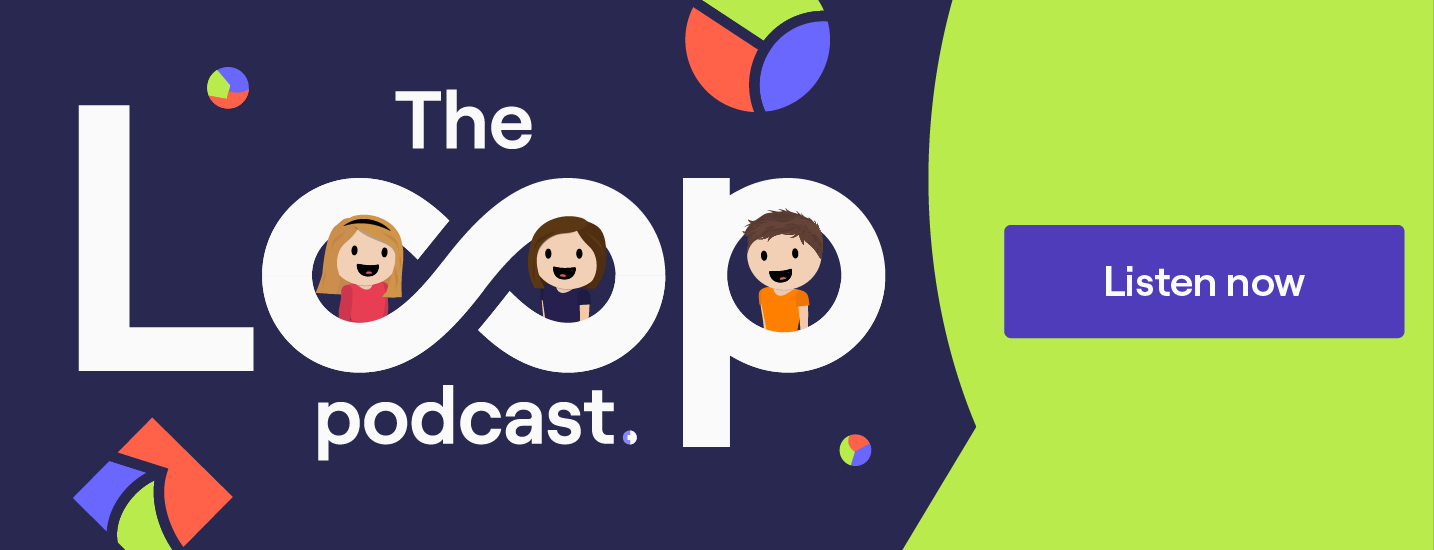How to Build a Winning Content Strategy for Your Brand
Content strategy resources:
There are a million different content strategies to choose from, and we at Cognism have tried our fair share.
But we have a new favourite content strategy we’d like to share with you.
This most recent evolution of our content strategy focuses on the topics we want to be associated with, planning ‘big rock’ content campaigns and building out our media machine content.
We’re here to pull back the curtain on our new content strategy and discuss how the B2B marketing content landscape is changing.
The changing content landscape and content marketer
B2B content marketing has changed significantly within the last 10 years. Basic webinar and SEO blog content on its own will not cut it. The competition for prospects’ mental availability for content is fierce.
A marketer who understands the content that drives demand can be a huge differentiator.
Legacy content marketer:
- Long-form written blog content (formulaic for SEO).
- eBooks and long-form PDFs (designed to get a content download rather than to be engaged with).
- Webinars (slide-based and unengaging).
- Social media as a means of distribution for the above only (lack of strategic understanding).
New age Demand Gen Content Marketer:
- Comfortable in long and short-form written, video and audio media. As comfortable writing as producing podcasts and video series.
- Creates content with engagement and community first and they understand this drives brand and conversion.
- At home in all social media, obsessed with engagement, community and virality (not just distribution space).
- Thinks about content with how it will be consumed first, i.e. customer and impact-centric.
- Knows to get engagement, you need to break formulaic content practices.
- Testing and measurement mindset to achieve content goals.
Cognism’s content strategy evolution
At the beginning of 2024, we were working under the Easy Mode strategy, a very useful content framework devised by Obaid Durrani and Todd Clouser.
The premise of this framework was to break free of restrictive content formats, challenging you to think about subject matter in a new way. Running our content within this framework gave us a valuable foundation that has become fundamental in how we run content now.
However, we found that the Easy Mode framework was complicated to keep up with in practice. We didn’t see the content translate to results in the same way that we had done in the past, and we felt we had strayed too far from what our audience knew and trusted us for.
Inadvertently, a couple of years before this, we had actually nailed this important element without realising it.
So we realised we needed to go back to what we did then, which is to create content around ‘what we want to be known for’ and bring things back to basics.
This kickstarted our entire new content framework.
Our overarching demand generation ideology
Before we jump into the new strategy, there’s a little more background context to lay down.
Cognism follows a true demand generation strategy. All our content is ungated, meaning we don’t pass content download leads over to sales. In fact, all of our leads come from inbound requests.
Instead, our content strategy is built on the idea of delivering our ICP as much value as possible so that they trust our brand and want to interact with it until they need a product like ours. We hope that they choose our brand as a recognisable and trusted option.
We wanted to get out of the mindset that we are marketing to stimulate an immediate purchase. Because that’s not how the B2B buying process works. Especially during economically challenging times when buying committees seem to be getting bigger by the day.
Instead, you need to market so that you’re front of mind when prospects are ready to buy. This way, you can be sure you’ll be on the list of vendors they choose to do further product research on.
For example:
You might not be in the market to buy a vacuum cleaner right now. But when you are, which brands come to mind? Because you’re likely going to have a scout of those brands you remember before making your final choice from that list.
By neglecting this out-of-market buyer, you’re allowing your competition to get onto the vendor shortlist over you.
Drew Leahy, Founder of Peanut Butter Comms, said:
“In complex buying situations, buyers have a lot of options and they want anything that will make that decision-making process faster and easier.”
“So if you’re easy to recall when a buyer realises they have an issue - without them having to go to Google to search for related terms - it’s such a massive advantage.”
Establishing a prior relationship and brand affinity is key so that they will recall your product when they’re ready to purchase.
Waiting until they’re in-market is too late. They’ve likely already made up their mind - and they’re going inbound to someone else.
Asking ourselves, what is it we want to be known for?
Coming back to our new content strategy focused on ‘what we want to be known for’. The idea here is that you’re tying yourself to a product category, becoming the ‘expert’ or ‘thought leader’ in this space.
By doing this, you help your brand not only be recognised, but also associated with the reasons why someone might come in-market.
Drew said:
“Salesforce did some research not too long ago and discovered they have an awareness problem. And I think a lot of marketers would say:
‘Salesforce - an awareness problem? Everyone knows who Salesforce is!’
“But the problem wasn’t that people didn’t know that Salesforce existed. The problem was that their target audience didn’t really know what they sold.”
“So they had to put together branding campaigns that built memories - attached to associations that they wanted people to have about their brand.”
By regularly releasing content that ties your brand to your product’s category, you’re building memory structures that can later remind your buyers to check out your company when they enter a buying phase.
What’s important is that the topic area you create content on is closely linked to what you do, without you simply talking about your product the whole time.
No out-of-market buyer is going to engage long-term with constant promotional content. And ultimately engagement is the aim of the game. Engagement = value received, which you hope leads to positive brand awareness and affinity.
Instead, it needs to be value-adding content within the general topic of what your product does, and the category you want to be known for.
For example:
For our sales persona, we landed on cold calling being the topic we want to be known for. This is tied to what our product does = contact data that can be used by salespeople for cold calling, but it isn’t just talking about contact data, which is our product.
If someone is building an SDR team and needs data for cold calling, hopefully, we’ll be front of mind because that is what we have tied ourselves to.
And for marketing:
We chose our switch from lead gen to demand gen - and wider demand gen strategies and tactics. Because our product can help marketers break free from the hamster wheel of lead gen and focus instead on more innovative marketing ideas.
Across the board, we want to be known for EU data quality as this is a USP for Cognism, which is why, more recently, we’ve focused our content efforts on creating a bank of content for those who are expanding their business into the EU.
Offering valuable resources on how to prospect into EU regions, what GTM strategies tend to work in those places, and listing the important things to know about operating in these countries.
The media machine and big rocks
Once we had decided on the content areas that we wanted to be known for, we started to fill a content roadmap with ideas around them.
This content falls under two categories:
- Either it’s to fuel our always-on media machine, e.g. blog content, podcast episodes, live event sessions or social media content.
- Or it’s a bigger swing content campaign, which we call a ‘big rock’.
We then created ‘big rocks’ around each of these core ‘what we want to be known for’ themes.
For sales and cold calling, we have our cold calling report, which we plan to update each year with our primary research into cold calling trends.
We also have SDR Zone, a content hub filled with resources for SDRs.
For our marketing persona, our big rocks have included the Diary of a First-Time CMO Vol.1 (and now Vol.2!), which details our demand generation journey.
Plus our Demand Generation Playbook, which we plan to update with our developing processes.
And then for our EU data quality big rock, we’re working on The Ultimate Guide to European Expansion.
The value of these “big rock” content pieces lies in their ability to attract attention and provide in-depth insights. However, because they require significant time and effort to produce, solely focusing on them would mean long gaps between releases.
To maintain momentum, our DG content team takes a phased approach to building big rock content. Every piece of content we create ties into one of these major themes, gradually contributing to a broader content library that feeds into our larger initiatives.
For example:
We’re producing a series of blog posts and videos on adapting US marketing and sales strategies for various EU markets. These smaller content pieces will later be integrated into The Ultimate Guide to European Expansion, ensuring continuous content output while working towards a larger goal.
The DG content team maps out deliverables for upcoming months with clear deadlines, ensuring visibility across the team.
With tools like Asana’s timeline view, managers can track upcoming content releases:
Additionally, tagging allows us to filter content by theme, making it easy to identify materials that support each strategic priority.
This structured yet flexible content planning approach enables us to stay agile in our execution while maintaining a long-term vision.
It ensures that everything we produce - from our ongoing media activities to our major content initiatives - aligns with what we want to be known for.
Demand generation content distribution
Our demand generation managers primarily distribute content through LinkedIn paid advertising, though other channels, such as email, also play a role. We approach content distribution in stages, ensuring a strategic rollout.
The first stage focuses on organic social distribution. We use company pages and SME profiles to share posts and assess which content themes resonate with our audience.
For example:
Our DG content manager recently wrote a blog on GTM AI. By sharing key takeaways across LinkedIn, we can observe audience reactions. If the engagement is strong, we move to the next step - light paid promotion.
At this stage, we allocate a small budget to amplify high-performing SME posts, increasing their reach as thought leadership content. This is a quick and low-effort way to validate interest while also helping grow our SME profiles.
If these boosted posts perform well, we take it a step further. Next, we experiment with rapid, low-production ads—what we call “ugly” posts.
These are designed to go live quickly and test response rates. Unlike the previous stage, these ads include CTAs directing users to the original blog post.
At this phase, our goal is to determine whether people are just engaging with the ad or if they’re genuinely interested in the full-length content. While likes and comments indicate surface-level engagement, we measure success based on click-through rates and time spent on the article.
If we see strong engagement with the blog post itself, we invest in a more polished, long-term ad with refined creatives. This ad will run over an extended period, continuously driving traffic to the blog.
Further along the validation process, if a particular content asset consistently generates results through paid distribution, we consider integrating it into an email nurture sequence.
However, email nurture campaigns require more effort to develop, so we typically reserve them for content pieces that have demonstrated pipeline impact.
This tiered approach to content distribution allows us to test, refine, and scale our efforts strategically, ensuring that we’re investing resources in content that truly resonates with our audience.
Reporting and the content feedback loop
We measure demand gen content in two ways:
- Pipeline and revenue impact of the content.
- Engagement and subscription.
In other words, during monthly reporting, we review the engagement metrics on new and existing content pieces and channels to assess whether our audience is getting value from them.
We then use this data to feed our future demand gen content roadmap and optimise the published content to keep it up-to-date and add valuable resources.
The nature of content means we can’t always directly attribute it to pipeline or revenue or track influenced impact. However, we can measure engagement as a leading indicator and correlate it to organic inbound demand.
We also use Dreamdata to see which content pieces were part of an overall journey that led to a later conversion.
A crucial part of this content production and distribution story is the feedback loop.
Which content pieces made it through the entire validation process? Which ones could be improved? And which ones just flat-out didn’t work for our audience?
We hold monthly calls between the DG content and DG managers to share recently published content pieces, discuss campaign plans, and, arguably most importantly, provide feedback on results. This is when both teams share important data points.
This feeds back into the initial planning stages for DG content and what they’ll produce for the following months and quarters.



